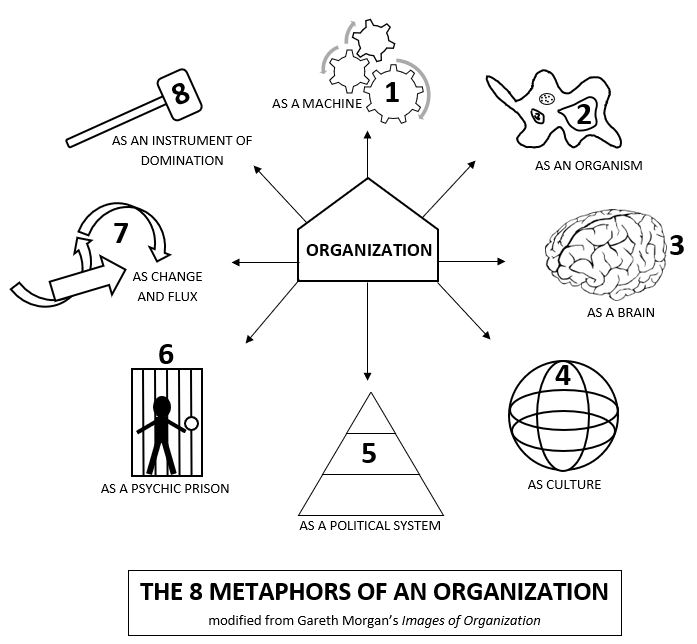11.2 Metaphors of Organizational Complexity
The use of metaphors can help the understanding of learning organizations and their complex structures. Organizational complexity is how the many different factors connect within an organization, and the number of resources that are used. The use of metaphors for organizational complexity can be used to realize and understand organizational life. In addition, it is a way to open up the thought process from multiple ones, and develop organizations in a way not previously conceived. The study of complexity theory is valuable, especially with regard to operations within an organization. McKinsey and Company impart the importance of complexity study within organizations, and suggest removing any complexity that does not add benefit to the organization. They also identify its different types[3]:
| Imposed Complexity | Inherent Complexity | Designed Complexity | Unnecessary Complexity |
|---|---|---|---|
|
|
|
|
The purpose of using metaphors for learning organizations is that they offer a unique vantage point. Gareth Morgan states that metaphors provide insight towards a pluralistic approach for understanding and that this combines multiple perspectives from different individuals[4]. It also helps to move beyond complexity and achieve a deeper understanding of organizations.
This stems from the work done by Morgan in the 1980s, when he identified eight key metaphors to understand organizational complexity. He uses them as a way to show how organizations govern, maintain, and regulate themselves[5]:
- Mechanization: organizations as machines
- Natural: organizations as organisms
- Self-Organized: organizations as brains
- Social Reality: organizations as cultures
- Political: organizations of interests, conflict, and power
- Incarceration: organizations as psychic prisons (i.e. Plato’s allegory of the cave)
- Logical: organizations of transformation
- The Ugly Face: organizations of domination
The importance of visually seeing these metaphors provide a possible perspective for specific situations, and how they should, or should not, be managed. Below is a graphic of Morgan’s eight stages of organizational complexity through visuals.

Metaphors for Organizational Complexity Activity
Use the activity below to develop a deeper understanding of how metaphors are used for conceptualizing organizational complexity. You can use the Morgan text as well as the Star text for a better understanding of metaphors.

